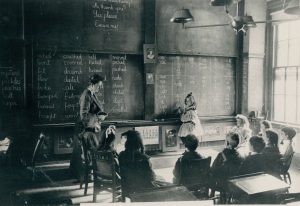Last week’s Assessment Community of Practice meeting focused on findings from the Ithaka S+R faculty survey, particularly those related to Undergraduate Instruction. Twelve librarians participated and we were lucky to be joined research project team members (Rebecca Lloyd, Annie Johnson, Fred Rowland and Kristina De Voe). The full summary report is linked here: Ithaka Survey Undergraduate Instruction_Final
Finding: A high percentage of faculty (72%) show video and their classroom and almost half (47%) assign the creation audiovisual or digital media projects.
Multimedia is used a good deal in classrooms, and increasingly, student assignments include a multimedia component. This finding prompts some further questions:
- How do instructors find out about media offerings at the Libraries? Are they included in regular notifications of new library materials?
- Is it easy for instructors to embed library-licensed video or other media into course management systems? As easy as incorporating YouTube?
- Do we, as librarians, need to be more savvy about the kinds of functionality available for use of multimedia in the classroom? Copyright restrictions? Technical barriers?
Students are also required to create “multimedia” projects as part of their course work.
- What do these “audiovisual or digital media projects” look like? Are they Powerpoint presentations or podcasts?
- Does the library provide sufficient support (technology-equipped spaces and services) for students working on these projects?
- Do we have the information we need to make appropriate referrals to other services on campus that do provide support, and how might we partner with them?
- What kinds of services and support will there be in the new library building for students as they develop digital technology projects?
Finding: Materials that are openly available on the web are of interest for course content. 79% of faculty often or occasionally “give preference to assigning course text or materials that are freely available”.
This is a finding of real interest to the Libraries as we promote Open Educational Resources.
- How do faculty understand “freely available”? Might this mean YouTube videos, or open access scholarly journals?
- Are faculty aware of the Library’s Textbook Affordability Project?
- How should we encourage faculty to use librarians help them locate quality resources for use in their courses?
Finding: A good percentage (50%) of faculty are strongly positive about the adoption of “new pedagogies or instructional approaches that take advantage of opportunities offered by digital technology.” For instructional support when introducing these new pedagogies, they rely most on their own ideas 72%, then on scholars in their personal network (52%), and then on the library (40%).
Faculty tend to rely on their own devices when learning about new technologies to incorporate into the classroom and in spite of technology challenges in the physical classrooms, many are interested adopting new approaches.
- What support is currently available to faculty interested in learning about digital technologies for use in the classroom?
- Are there technologies available to faculty through their schools that we should be aware of?
- How might the Libraries provide more support for faculty in need of instructional support in these areas?
These Assessment Community of Practice meetings generate many good questions, and allow us to consider how research into practice can be challenging. Surveys, no matter how well designed, do not always lead to clear answers or implications for library services. Did the respondent understand the question and the way that we, as survey designers, meant it? How do we best write up our findings in a compelling, yet neutral and balanced way? As the research team can attest to, turning raw numbers into a meaningful and compelling story took hard work and a willingness to creatively translate findings into action steps.

